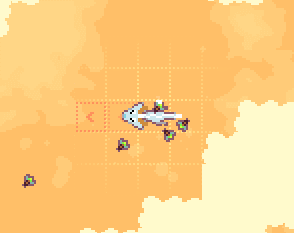I liked the puzzle with 4 full diacombs blocking 2 thin hallways even though I was stuck on it for a while. It's small and simple and it's very clear what the problem is, there isn't too much freedom or too many parts to it so the solution isn't obscured by too many choices, all your thinking goes to solving a single problem. I think it's what Jonathan Blow would call a "pure" puzzle.
The next room has a bit of the opposite situation with lots of small diacombs filling the room. There's too many options and any choice could cause a cascade of other effects later down the line, and it's hard to trace down where you went wrong. It might have been more fun to solve a couple smaller rooms like that instead of a single big one.
I was hoping there would be something crazy involving waking up all the Diacombs in the game, but maybe that's asking for too much from a Ludum Dare game. :P


